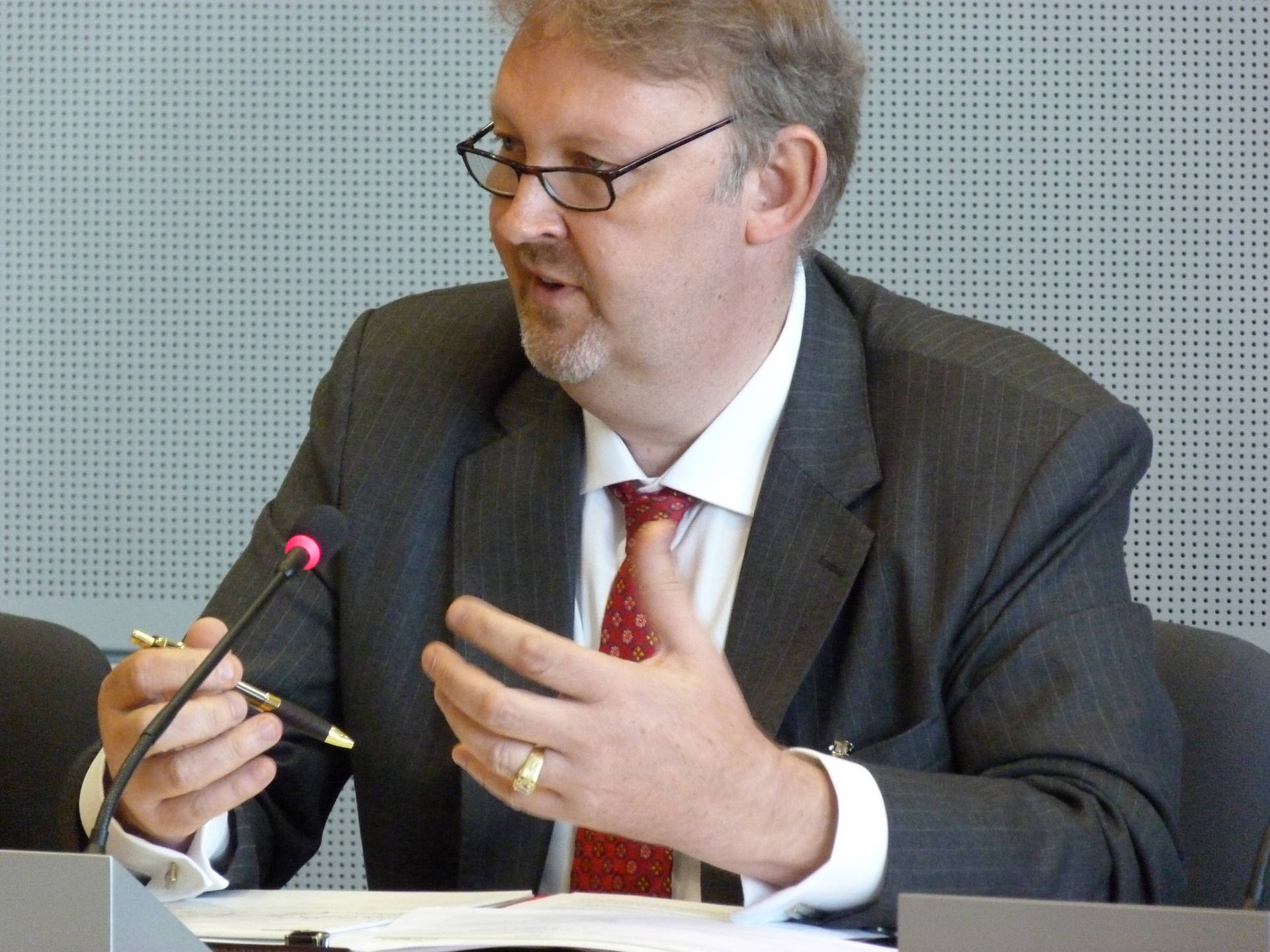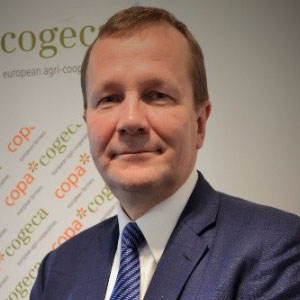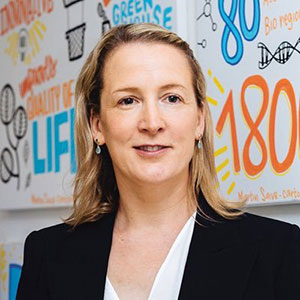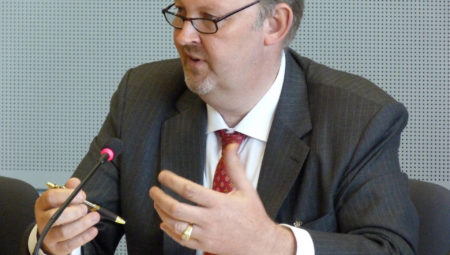In short, this is the new vision that fifteen parties from the European bio-economy are jointly presenting this month under the leadership of the Bio-based Industries Consortium (BIC). “This is not just a vision of the industry,” says Dirk Carrez, Executive Director of BIC. “It is a joint vision of multiple sectors and that is unique.”
Time for renewal
It is time for renewal, Carrez states. “Within the European Horizon 2020 innovation program, we have set up the Bio-based Industries Consortium and the Bio-Based Industries Joint Undertaking six years ago: a public-private partnership that invests millions in major research and demonstration projects. That agreement is coming to an end next year, when the successor to Horizon 2020 will start: Horizon Europe.”
It is not the intention to continue ‘business as usual’ within the new program, but to go a step further and see how more sectors can be involved. “Because if one thing has become visible in the last six years, then it is the importance of bringing together different industrial sectors and working together in value chains: from agriculture and forestry through processing to raw materials, chemicals, manufacturing and trade up to and including market actors and the end user, the consumer.”
Zero-waste process
All these sectors bring their own perspective and are often in a different phase of the transition to biobased. “For example, agriculture focuses on the efficient production of food and the generation of a good income, while today the industry mostly focuses on making biobased products from non-food biomass. We bring those two worlds together. It is no longer about food or non-food, but about how we can valorise all components from a certain crop, so that a zero-waste process is created.”
For farmers, this means that they can not only find income from the production of food, but also from the supply of renewable feedstock for chemicals and materials. In addition, there is a growing interest from the industry in extracting proteins and carbohydrates from side and residual flows. Carrez: “Partnerships within and between sectors are therefore very important. By entering into a dialogue, we can jointly ensure that everyone benefits, both economically, socially and in terms of the environment.”
Involving consumers
One step further is the stimulation and creation of markets for biobased products. “This is only possible by also involving the end of the value chain in our activities: the end users or consumers. We are already seeing increasing participation from brand owners who want to market biobased products. This indicates a growing market demand. We must therefore jointly determine which biobased products are already on the market, for which products there is a demand and why. There is no ready-made answer. Young people may find a green environment important. Other consumers are interested in the types of material, or the biodegradability. This differs per sector, per application, per product and per consumer group. Within BIC or a possible next partnership within Horizon Europe, we therefore want to set up methods to improve communication with consumers.”
Next steps
The Vision will serve as the framework for the development of a Strategic Research and Innovation Agenda (SIRA), which will form the basis of a new public-private partnership on bio-based solutions under Horizon Europe (2021-2027). The SIRA will be an important tool to realise and implement the Vision with all involved stakeholders (primary producers, industry, academia, the EU and society at large).
The first step in this direction is to set up workgroups in which the stakeholders work together on a new partnership. “With broader support and more sectors around the table, hopefully in the future we can set up value chains within Europe faster than before, leading to economic growth but also contributing to the climate,” says Carrez. “Moreover, where we often talk today about qualitative contributions that projects can make to the realization of certain SDGs, we must also measure that quantitatively in the next five to ten years. It is therefore necessary that we take one step further as an industry and cooperate with a number of NGOs which develop standards for proper measurement. This is important so that we as an industry can substantiate our claims.”
This article was written in cooperation with the Bio-based Industries Consortium (BIC).


 “Farmers and cooperatives are not only the first producers of food but they are also prominent biomass producers. This is why we are convinced that agriculture and forestry have a crucial role to play in the Vision framework. Its implementation will help to create strong synergies between all relevant partners, promoting sustainable production and consumption in the EU thanks to innovation” says Pekka Pesonen, Secretary General of Copa Cogeca, the European association representing farmers and their co-operatives.
“Farmers and cooperatives are not only the first producers of food but they are also prominent biomass producers. This is why we are convinced that agriculture and forestry have a crucial role to play in the Vision framework. Its implementation will help to create strong synergies between all relevant partners, promoting sustainable production and consumption in the EU thanks to innovation” says Pekka Pesonen, Secretary General of Copa Cogeca, the European association representing farmers and their co-operatives. “Funding from the BBI JU has helped us to bring innovations faster from lab to market and to establish new cross-sectoral value chains. A comprehensive public-private partnership under Horizon Europe will be instrumental in enabling the circular bio-society Europe needs. As the leading provider of renewable and recyclable materials, the European forest fibre and paper industry, is ready to lead this transition” says Sylvain Lhôte, Director General of CEPI, the European association representing the forest fibre and paper industry.
“Funding from the BBI JU has helped us to bring innovations faster from lab to market and to establish new cross-sectoral value chains. A comprehensive public-private partnership under Horizon Europe will be instrumental in enabling the circular bio-society Europe needs. As the leading provider of renewable and recyclable materials, the European forest fibre and paper industry, is ready to lead this transition” says Sylvain Lhôte, Director General of CEPI, the European association representing the forest fibre and paper industry. “The European Technology Platform ‘Food for Life’ welcomes the inclusion of some key features for the food sector in the Vision for a circular bio-society, such as the Food2030 strategy, sustainability, and the role of SMEs. We are looking forward to further exploring, together with all involved stakeholders, possible ways to realise this vision,” says Rebeca Fernandez of the ETP ‘Food for Life’ Secretariat. ETP Food for Life promotes opportunities for improving welfare and well-being in the EU through research and innovation in the food area.
“The European Technology Platform ‘Food for Life’ welcomes the inclusion of some key features for the food sector in the Vision for a circular bio-society, such as the Food2030 strategy, sustainability, and the role of SMEs. We are looking forward to further exploring, together with all involved stakeholders, possible ways to realise this vision,” says Rebeca Fernandez of the ETP ‘Food for Life’ Secretariat. ETP Food for Life promotes opportunities for improving welfare and well-being in the EU through research and innovation in the food area. “We need concrete measures to accelerate the move to a sustainable, competitive and circular European bioeconomy, catalysed by industrial biotechnology. An ambitious public-private partnership on bio-based solutions under Horizon Europe, building on BBI JU’s successes, is important to keep prompting bio-based innovation, creating new value chains and bringing together sectors and stakeholders,” says Joanna Dupont-Inglis, Secretary General of EuropaBio, the European association for Bioindustries.
“We need concrete measures to accelerate the move to a sustainable, competitive and circular European bioeconomy, catalysed by industrial biotechnology. An ambitious public-private partnership on bio-based solutions under Horizon Europe, building on BBI JU’s successes, is important to keep prompting bio-based innovation, creating new value chains and bringing together sectors and stakeholders,” says Joanna Dupont-Inglis, Secretary General of EuropaBio, the European association for Bioindustries.

